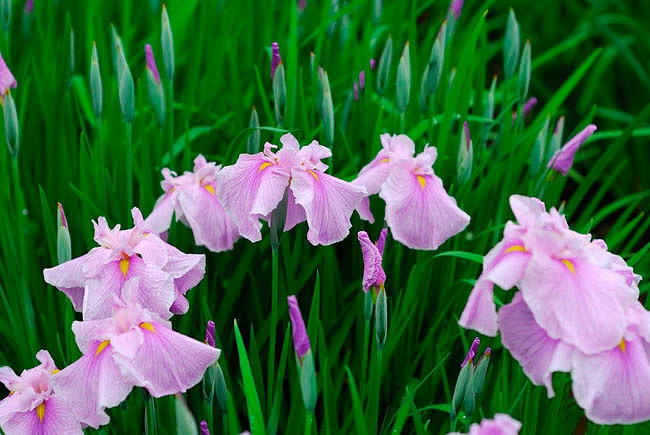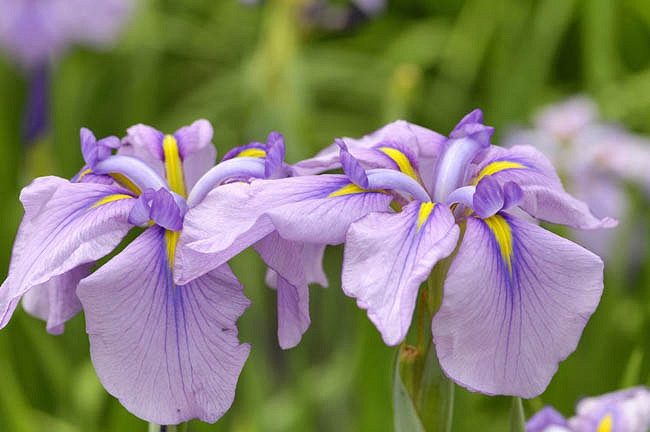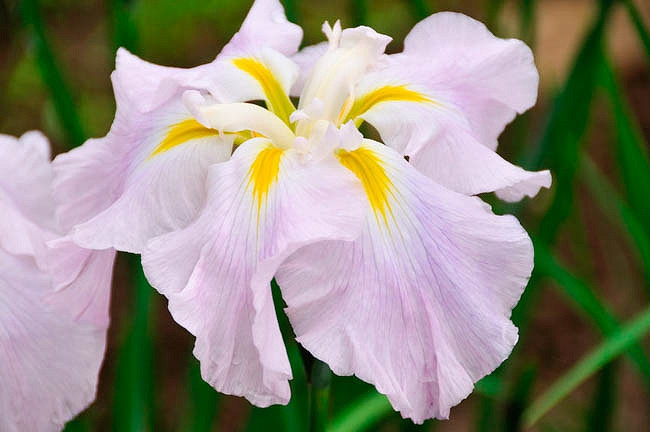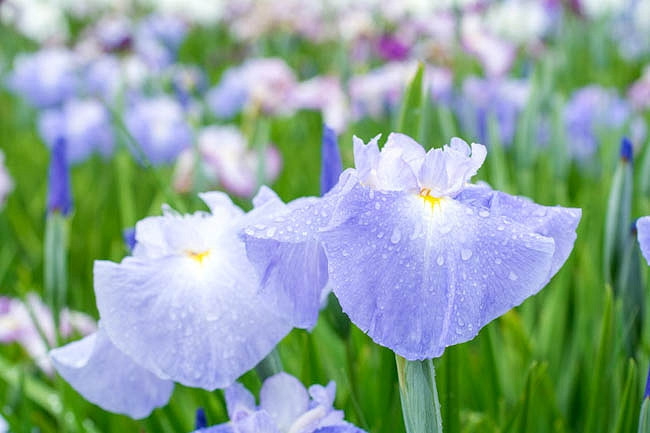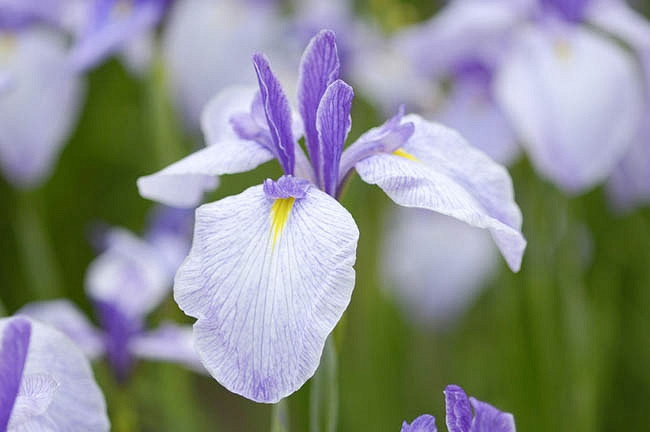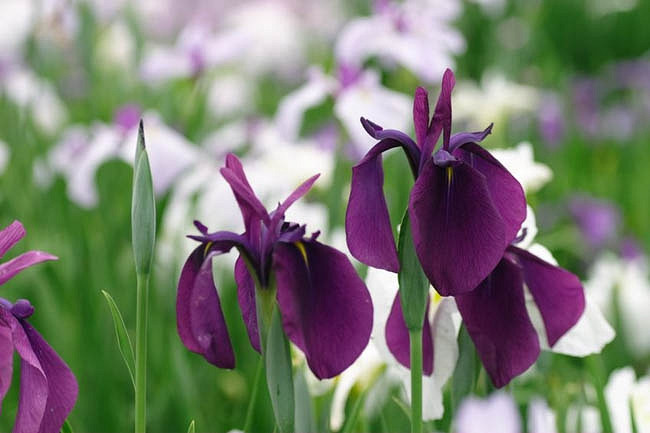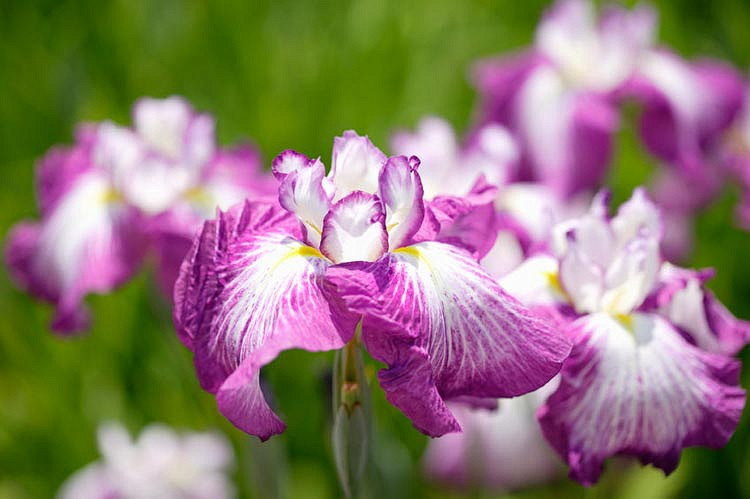Iris ensata Coho (Japanese Iris)
Considered to be one of the finest pink Japanese Irises, award-winning ‘Coho’ (Iris ensata) does stand out with its elegant display of large, single, pure pink rounded petals adorned with a delicate golden flush at the base of each fall.
Considered to be one of the finest pink Japanese Irises, award-winning 'Coho' (Iris ensata) does stand out with its elegant display of large, single, pure pink rounded petals adorned with a delicate golden flush at the base of each fall. Elegantly rising up to 38 in. (95 cm), this very early season Japanese Iris boasts up to 2 branches, each counting 5 to 7 buds, and will exhibit exquisite blooms in early to mid-summer. After blooming, the sword-like foliage, consisting of sturdy clumps of linear green leaves with prominent midribs, is also one of its most attractive garden features. Spectacular when planted in groups, this lovely Iris will excel at providing vertical interest in the garden.
- Won the Payne Medal (2012), which is the highest award given by the American Iris Society to a Japanese iris.
- Easy to grow, this Japanese Iris performs best in full sun or part shade, in humus-rich, medium to wet, acidic soils. It loves moisture-retentive soils and thrives in standing water, up to 6 in. deep (15 cm), during the growing season. Since Japanese Irises do not cope well with standing water and boggy soils in winter, you may want to grow yours in pots that are sunk in water during the growing season but which then are moved to dryer ground in fall and winter.
- Will grow successfully in ordinary garden soils or perennial borders as long as it receives adequate moisture, especially during the growing season.
- No serious insect or disease problems. Watch for slugs and snails as well as wet conditions in winter which may cause root rot.
- Deer resistant, salt and wet soil tolerant.
- A welcomed addition to water gardens, Japanese gardens, along pools or streams. Most spectacular when planted in large groupings where it develops a bouquet effect
- Propagate by division of rhizomes from midsummer to early fall. Remove any dying foliage in the fall. Old flower stems may be cut down after flowering.
- To be planted in fall or spring. Plant your rhizomes approximately 2 in. deep (5 cm). After planting, add a heavy mulch of 2 to 3 in. (5-7 cm) to help conserve moisture and reduce weeds.
- All parts may cause discomfort if ingested. Wear gloves and other protective equipment when handling.
- Toxic to dogs, toxic to cats, toxic to horses.
Requirements
| Hardiness | 4 – 9 |
|---|---|
| Heat Zones | 1 – 9 |
| Climate Zones | 1A, 1B, 2A, 2B, 3A, 3B, 4, 5, 6, 7, 8, 9, 10, 14, 15, 16, 17, 18, 19, 20, 21, 22, 23, 24 |
| Plant Type | Aquatic Plants, Perennials |
| Plant Family | Iris Ensata – Japanese Irises |
| Exposure | Full Sun, Partial Sun |
| Season of Interest | Summer (Early,Mid) |
| Height | 3' – 4' (90cm – 120cm) |
| Spread | 1' – 2' (30cm – 60cm) |
| Spacing | 18″ – 24″ (45cm – 60cm) |
| Depth | 2" (5cm) |
| Water Needs | Average, High |
| Maintenance | Low |
| Soil Type | Clay, Loam, Sand |
| Soil pH | Acid, Neutral |
| Soil Drainage | Poorly Drained |
| Characteristics | Cut Flowers, Plant of Merit, Showy |
| Tolerance | Deer, Salt, Wet Soil |
| Garden Uses | Beds and Borders, Bog Gardens, Ponds and Streams, Rain Gardens, Wall-Side Borders, Water Gardens |
| Garden Styles | City and Courtyard, Coastal Garden, Informal and Cottage, Japanese Garden |
